Tallgrass Prairie National Preserve
Strong City, Kansas
After spending time in the park’s really excellent and informative visitor center learning about the prairie and its natural history and then going out to see the beautiful original ranch buildings, we finally start our hike on the Southwind Nature Trail. If you are interested in knowing something about what you are going to see in this post and haven’t read the previous one, you can find it here. If you want to hop back and forth between the information and the pictures of the prairie just open two browsers and alt/tab between them.
There are several places to start out on the trail. We go off behind the ice house. It is labeled in the lower part of the map. Then we follow the dark trail line around to the left, all around and ultimately over the stream, down to the school house and back to the ranch house along the original road.
There are a lot of fall wildflowers in bloom in the prairie today and the rocky ground is very evident on the path. No wonder this land escaped the plow.
Many of the plants are as tall or taller than I and some as tall as David.
Looking out over the prairie you can see the the school house in the far distance. The green trees clearly mark the creek line. The path we will bring back from the schoolhouse was the one the children living in the ranch house took to school.
We get up close and personal with the grasses, plants and insects.
The colors of the grasses are just wonderful. I never knew grass could be so interesting.
We didn’t want to trample anything by going out into the fields to show the height but this should give you some idea. Even the flowers are tall. I wasn’t expecting as many flowers. I was expecting much thicker grass. The flowers and grass are seriously intermingled. But we have only had time to hike one trail so we can’t speak for the other 10,000 acres.
I am a serious dawdler on this hike. Everywhere I look there is some interesting flower or seed head or grass or insect going about his business. I am captivated. David is waiting for me at the bridge over the creek which begins the lollypop tail of the trail out to the school house (see map above)
I had seen pictures of Snow on the Mountain in the visitor center and it just looked like a made up plant, something you’d find in those plastic flower stores. I never expected to see a huge stand of it in the prairie. Luckily my zoom lens was working fairly well today so I could get some close up pictures of this amazing plant. We see it more closely on the other side of the stream down the path to the school house.
I catch up with David and enter into what must be a wonderfully cool oasis in the prairie summers. The trees are primarily cottonwoods.
The prairie starts again just beyond the stream. As soon as the land becomes dry, the grasses take over.
I am thinking perhaps wasps are the pollinators of Snow on the Mountain but it’s not spring so who knows why they seem to be so interested in it.
I wasn’t at all surprised to see these guys on the dry prairie soil. What big eyes you have sir!
Providing a basic education for their children was a high priority for prairie settlers. Classes began here in the Lower Fox Creek School in 1884 and continued until 1930. Land for the school was donated by Stephen F. Jones the original owner of Spring Hill Ranch. The one room school was constructed of the same limestone that underlies its knoll.
.
Notice the two doors. No idea why unless it is one for boys and one for girls for some reason. I thought the Shakers were the only ones who did that.
The long bench in the front of the room was a recitation bench. It was where teachers called students to recite their lessons: reading aloud, demonstrating their math skills, having their handwriting critiqued and practicing their geography. Seems we don’t teach 50% of these skills anymore. At the same time, the other students were quietly working at their desks preparing for their turn to be called to the front of the room. While they were waiting, they overheard the lesson being studied at the recitation bench. This was a great review of what they had learned previously or a preview of what they would learn in the coming years. It has been said that every child heard every lesson at least 8 times by the time they finished their eight years in the one room school. As a former teacher, this sounds like a terrific idea to me. Perhaps today’s students would have better memories, longer attention spans and more patience. But as the calendar shows, that was in 1882.
Remember when they used to teach handwriting and people wrote letters which were actually lovely works of art?? The alphabet is all along the wall above the board in the back of the classroom. In my elementary school, it was all along the top of the blackboard in the front of the room. Did they teach handwriting when you were in elementary school?
Here’s the daily schedule. Doesn’t look like music and “drawing” got any more time than than now. Although they teach physiology, orthography and geography, none of which are taught today, it looks like reading got the bulk of the time.
Looks like these two are staying after class. Can’t you imagine the trouble they caused.
After cleaning the erasers, we head back down the lollypop for the path back to the ranch house.
At the end of the trail is some of the miles and miles of stone fence put up by Stephen Jones all around his property. We spend some time looking at the different types of limestone used in the construction. This interesting information on the six types of limestone is in the previous post. You can see the ranch house in the background.
I am really sorry we do not have at least another day or two to spend in other sections of the park to see other areas and the bison herd. I found the prairie to be a very calming and almost soothing place to spend an afternoon and know that I would be here a great deal if I lived in this area. Not sure how much fun it is in the summer but it was wonderful on this fall day.
We’re spending the night in Emporia Kansas at the Emporia RV Park. It is 20 miles further east on US 50. Can’t say that I can highly recommend it. It’s an OK place, the park itself is fine but $27 for water and electric right by two interstates (I-335 and I35) with a train next door that blows its horn about every 15 minutes, seems a bit on the high side to me. I didn’t think there was anywhere in the country with that many trains any more. But with no Walmart and no Cracker Barrel anywhere around we didn’t want to get too far off the highway for just one night. We probably could have stayed in the parking lot at the Prairie if we’d asked. We didn’t think to and by the time we left, everyone was gone. So remember that if you come to visit in a low tourist time.
Our last stop before arriving in Virginia is 650 miles from here at Mammoth Cave National Park. Normally we would do this in 4 days….about 160 miles a day….but we want to spend a few days at Mammoth Cave, we don’t want to arrive on a Friday at a walk in National Park and we need to get back to Virginia in less than a month. So it’s 300+ miles for two days in a row. I wonder if it will qualify for PDD Bronze? Surely 650 in two days should don’t you think??








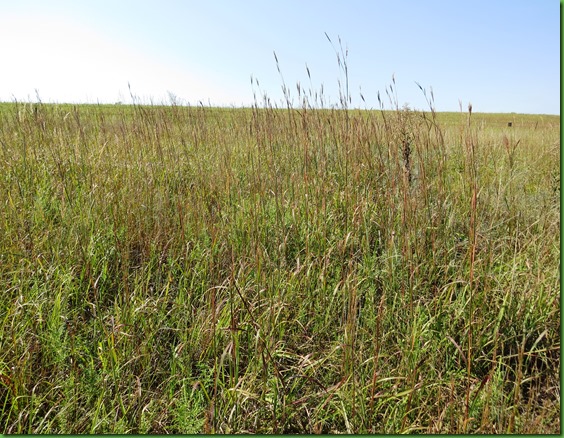






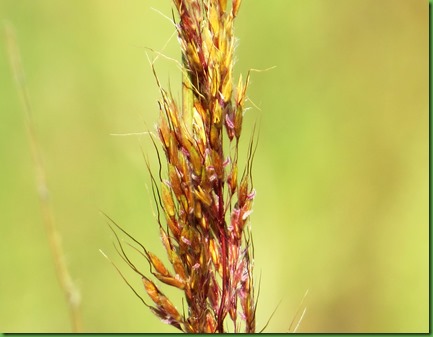






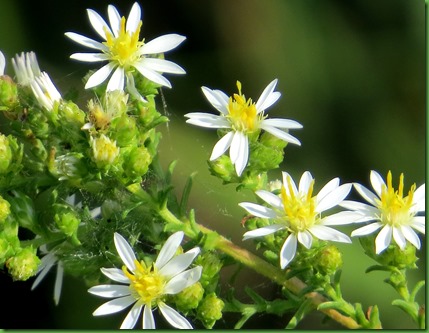
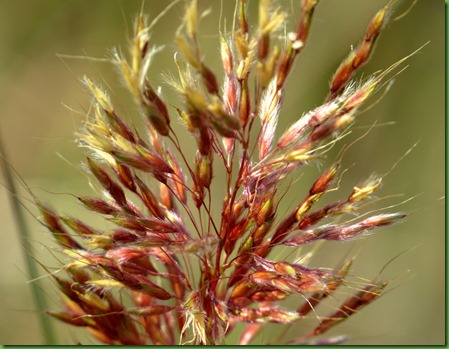
































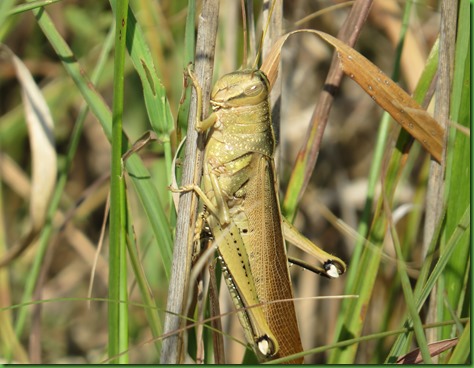









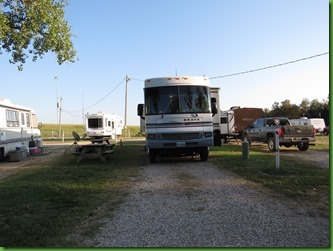

With your bonnet, you just blended in with the Little House On The Prarrie hike!!! Certainly was lovely... so many flowers, grasses and insects. Yep, you looked right at home:o))
ReplyDeleteWhat strikes me is the variety of the vegetation. And the schoolhouse reminds me of one that's been rebuilt here in one of our museums- the layout's very similar, but with a picture of King George VI instead of Abe Lincoln.
ReplyDeleteI have never seen such a beautiful alphabet. The Zaner Bloser alphabet I learned is a lot different. Many schools have dropped handwriting instruction. That's really a shame because the physical act of handwriting of notes helps memory retention of information. Kids are losing ground even if they have computer skills in my opinion! Thanks for the tour!
ReplyDeleteI was going to comment that you and your bonnet blended right in as well. Loved the prairie grasses, and especially the prairie flowers. A very interesting tour.
ReplyDeletenice - and, your bonnet fits in the prairie landscape perfectly! i see that i am not the only one who thinks so :)
ReplyDeleteAbsolutely love the picture of David under the path "arch"! The flowers and grasses are beautiful and bright on such a lovely day - so glad you got to enjoy them. I spent first and second grade at a one-room school in our little desert community. I remember loving to learn with the "big kids". And we definitely learned cursive - I can't imagine it not being taught :-( Those naughty kids must have been quite the handful!!!
ReplyDeleteWhen I went to elementary (grammar) school in Chicago, two playgrounds surrounded the three story school. The one on the east was for boys, and the one on the west was for girls. We entered the building in straight lines through different doors and silently followed a painted white line to our classroom And that wasn't in the 1800's!
ReplyDeleteI come from a family of teachers, mom and four siblings. And yes we were taught how to write legibly and well when I was in grade two. My mom who was my teacher in grade four also made sure my cursive handwriting are done perfectly.
ReplyDeleteThanks for the sneak peak, I just hope the prairie would be in bloom when we visit it in spring next year.
Hey welcome to Kansas from about 100 miles south in the southern Flint Hills in Arkansas City! Thank you so much for your beautiful photos and great articles about this! We've driven by many times and never stopped... Kind like those New Yorkers who've never been to the Statue of Liberty and such.
ReplyDeleteThe Flint Hills have a great history in the unfolding of my state. Eugene Freisen, the cellist from the Grammy award winning ensemble The Paul Winter Consort wrote The Grasslands Symphony in tribute to them and it was first preformed here in an open air presentation several years ago with that group and our local symphony and a select choir that I was a member of. It was a treasured evening to honor the prairie that has sustained so many through the years!
Thanks for visiting! Safe journeys!
The praririe is full of surprises .... I guess I was expecting more grass and less flowers. In some ways, similar to Big Meadow on Skyline Drive.
ReplyDeleteooops ... should be prairie!
DeleteI guess Judy answered the question of the two doors. I also thought of Little House on the Prairie when I saw the picture.
ReplyDeleteI'm impressed by the flowers and grasses. How pretty! And, that school! Wonder if the folks who went to that cute schoolhouse in the 1920s/1930s are still alive and remember learning there. All the lessons over and over would definitely help with memory and patience. I learned cursive. It didn't stick. ;)
ReplyDeleteWalking around in your bonnet you look like one of the original settlers!
ReplyDeleteThose Snow on the Mountain flowers are wonderful! Love the variegated petals.
Handwriting, books...things that are being taken over by technology. Nowadays we go into a museum and see things like the old finger dial telephone from my own youth and it's considered historical! I guess time stops for no one!
there aren't many that can enjoy a tall grass prairie... I did a lot of my college research on just these beasts....
ReplyDeleteBeautiful pics and great post! We enjoyed our visit a few years back.
ReplyDeleteWhat a beautiful array of wildflowers intermingled with the grasses -- the Snow on the Mountain is especially lovely. We've not been to a tall grass prairie, but we found a huge array of wildflowers at Zumwalt Prairie in eastern Oregon. And yes, you do fit right in wearing your bonnet as you stroll the prairie! I was taught cursive writing in elementary school, but I had to look up the meaning of orthography.
ReplyDeleteI am always blown away by so many variety of grasses, such delicate patterns and different colors. Plus these are SO tall. Your closeup shots are outstanding. Those stone fences show true craftsmanship, especially the dry stacked. I agree about the way school was taught and would include these subjects along with a few more. I remember the cursive letters above the blackboard and used to own a set of them later in life.
ReplyDeleteYes, we were taught cursive writing in third grade, and I remember seeing the alphabet displayed in cursive or printing (depending on the grade) up above the blackboard. It's still hard to believe some schools aren't teaching cursive writing. I just don't get it. As for the two doors into the school, I concur with Judy. In fact, "Boys" and "Girls" was etched in stone above each door of one of the elementary schools in our hometown.
ReplyDeleteAs I recall, they called it "Penmanship", and yes we had that beautiful cursive alphabet on the walls and some pretty rough paper, thicker than newsprint, with lines about an inch apart with the halfway line in between to help in the practice. I can still write cursive but the beauty went a LONG time ago. Fabulous pictures of the grasses, flowers and amazing insects too!
ReplyDeleteThank you so much for your report on your visit. My husband and I graduated from Kansas State University and live in Overland Park, KS. In spite of our nearness we have not visited this park. I did hike a portion of the prairie near Manhattan, KS. I loved the grasses and the wild flowers. But you have made it so interesting that we will have to make a special effort to visit what is right under our noses.
ReplyDeleteYou fit right in wearing your bonnet :)
ReplyDeleteLove your pictures of the prairie grasses, I visited there in 2011 just a few months after I purchased my RV. I love the tall grasses, Montana had a lot of open prairie areas.
ReplyDeleteI guess we all think alike. As I was reading the earlier part of the post, I was thinking I hoped you were wearing your bonnet :) I remember learning cursive, and how painstaking it was. It's definitely a lost art. I wonder how this generation will know how to sign checks if they don't learn it?
ReplyDeleteWe are fortunate that various regions of our great country all have something beautiful and interesting.
ReplyDelete